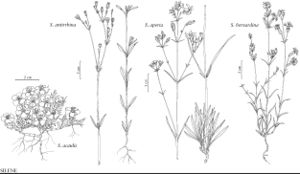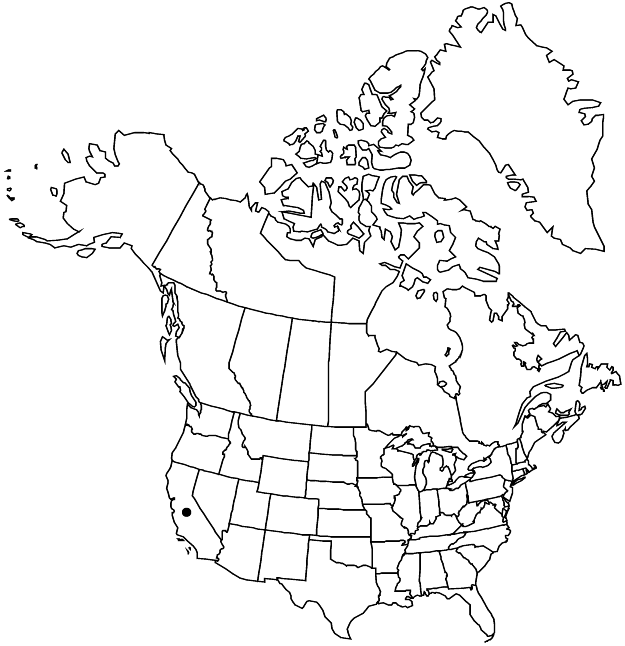Silene aperta
Leafl. Bot. Observ. Crit. 1: 75. 1904.
Plants perennial, cespitose, puberulent throughout; caudex woody, branched, with clusters of leaves. Stems several, erect, not much-branched, slender, 15–60 cm, flowering above middle. Leaves: cauline in 2–4 pairs, gradually reduced distally, blade linear with broadened base, 1–8 cm × 1–2 mm, apex acute; basal leaves tending to wither by flowering time, blade with midrib present, linear-oblanceolate, 5–12 cm × 1–4 mm, apex acute. Inflorescences few-flowered, bracteate, narrow, flowers terminal and axillary; bracts linear, 2–10 mm. Pedicels ascending, straight, slender, very short in bud but equaling or exceeding flower at anthesis. Flowers: calyx 10-veined, campanulate, lobed to middle or below, 6–10 mm; lobes 6, recurved, 1–3-veined, lanceolate to linear-lanceolate, margins membranous, ciliate, apex acute; petals white to pale greenish, lobed, clawed, 12–20 mm including claw, ca. 2 times length of calyx; lobes 4, small, 1.5–2 mm, claw woolly towards base, appendages absent; stamens equaling petals; filaments pubescent at base; styles 3, shorter than to equaling stamens. Capsules ovoid, exceeding calyx, dehiscing with 6 spreading teeth; carpophore 1–2 mm. Seeds brown, broadly reniform, less than 1.75 mm, margins coarsely tuberculate to papillate, with concentric rings of tubercles on both faces. 2n = 48.
Phenology: Flowering Jun–Sep.
Habitat: Open, grassy areas in fir and pine forests
Elevation: 1800-3000 m
Discussion
A deeply lobed calyx and grasslike leaves give Silene aperta a very distinct appearance. The species is found only in Tulare County.
Selected References
None.

